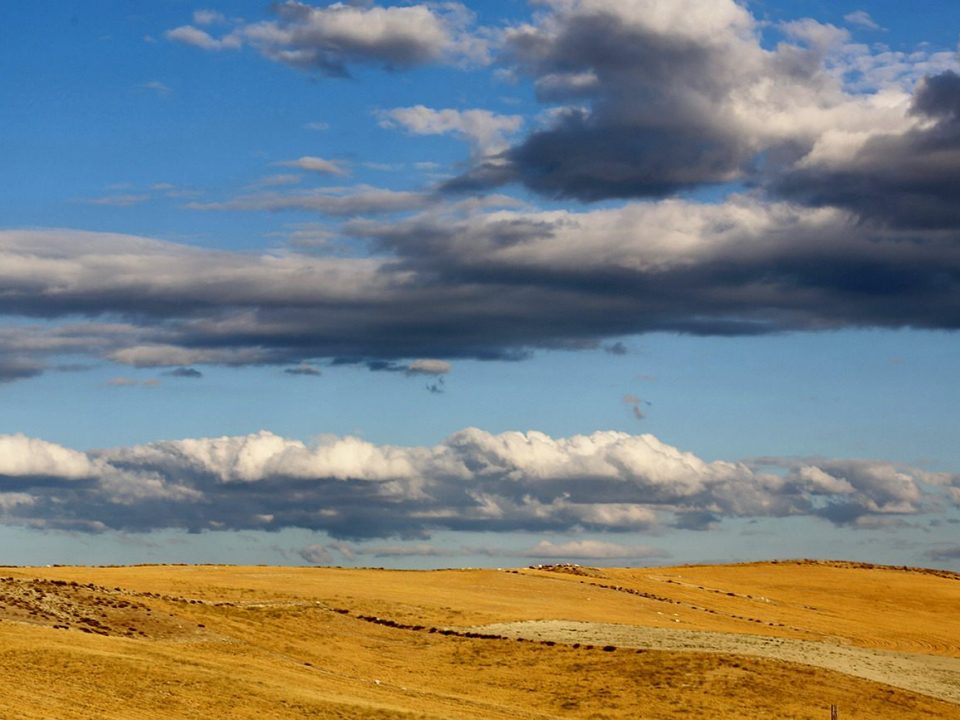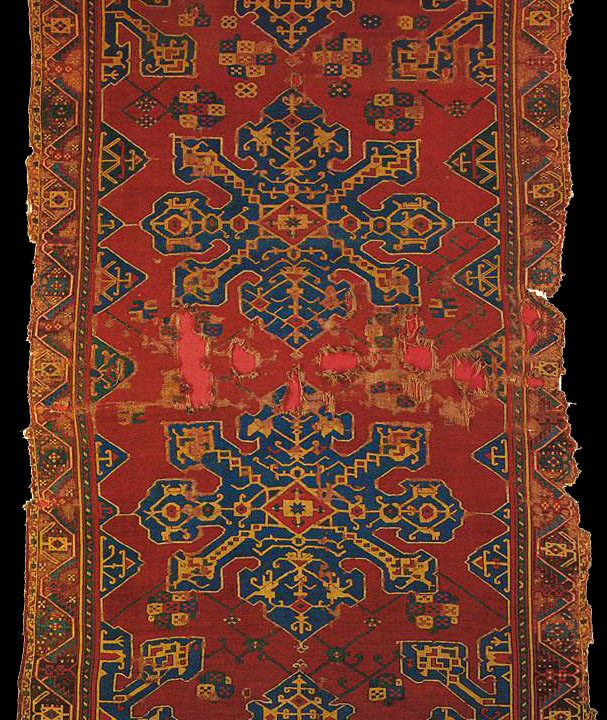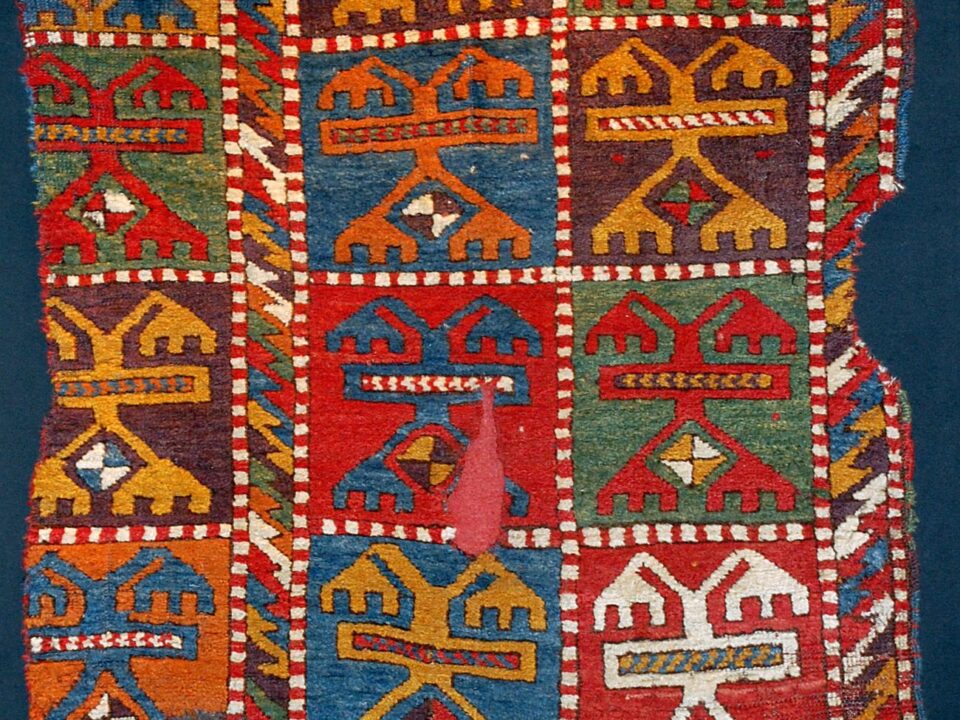
Colors through eyes and hands of Anatolian weavers
May 11, 2020
Nomad Cuisine, Would You Like Some?
May 11, 2020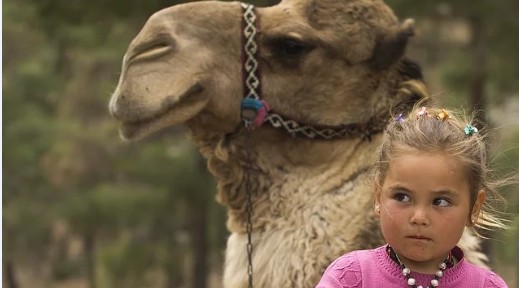
For thousands of years, nomads have been migrating according to the season, to benefit from the different altitudes at the foot and on top of the great Taurus Mountains.
This migration takes place twice annually, the first at the beginning of May and the second at the beginning of November. The two migrations have some different aspects due to seasonal differences, which have effects on nomadic life.
In this article, we will try to describe the autumn migration of Anatolian nomads.

Yörüks migrate from the highlands to the lower plains of the Mediterranean for the winter season.

A Yörük woman looking after the family’s flock advancing towards the south during autumn migration.
The Autumn migration includes two main moves, one in early fall from the summer pasture to an intermediary altitude pasture called the “güzle”, and the other from the güzle to the winter quarter. Güzle places are generally vast empty valleys of 1000 meters of altitude, whereas the winter quarters are almost sea level. The autumn migration is generally considered a romantic-nostalgic journey, with a feeling of pessimism by the effect of leaving sunny, chaotic, crowded and joyful days in the summer pasture and going to cloudy winter quarters where loneliness reigns for the house dwellers separated from the other side of the tribe.
At the end of August, the graze is dry, and there is almost no more green in the pasture. For this reason, the sheep and goats, which can eat only dry grass give less and less milk, and what they do give contains more fatty substances and dry material. Though the daily milk amount of the sheep and goats decreases significantly, nomads use this concentrated milk in order to make cheese, butter, concentrated yogurt and other dairy products for the family consumption during the whole winter, because products made in this season are more delicious and durable due to the dry substance percentage in the milk.
One of the main properties of these intermediary pastures –the güzle, between the summer pastures and the low lands-is that there is always an important marketplace close to the many stopover points of nomads where they can sell the products they produced in the summer pasture during the whole summer season.

The tribe advance towards lowlands of Mersin city nearby the Mediterranean

Sarıkeçili yörük tribesman detaches loads of camels during the mid-day break of the daily migration
The main product sold in this market is the sheep. Young lambs, old female sheep, and rams which gained a lot of weight in the summer pasture by fertile graze are the primary income source for a nomad family. 60% of the flock is sold in this way, so only females who are subject to be bred in one or two months, some male lambs, and very robust rams to be breeders for the flock of the next year are kept.
The second item to be sold are the milky products, especially matured cheese stuffed into sheep and goat skins preserved in caves at 2000 m, which are aged for 12 months at 4 C Celsius.

A Sarıkeçili tribeswoman holding the horse to be loaded

A sarıkeçili baby sleeping during the autumn migration, 2016 Mut/Mersin

Camel carrying the two symmetric nomadic sacs, the bedding pile and perdeh textile covering the load and a baby. Sarıkeçili Turkmens, Mersin, Southern Turkey 2012
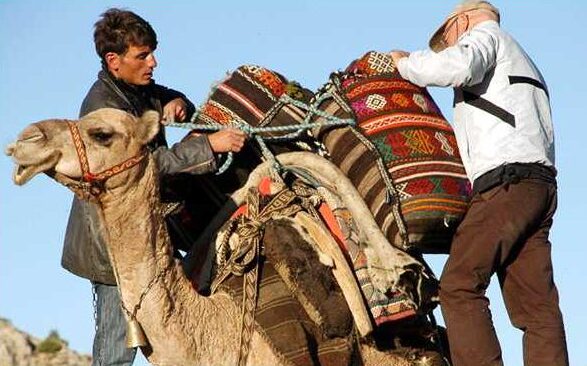
Uploading the handwoven sacks onto the came saddle
The third product is the excess wool and goat hair which is either washed or non-washed; this is apart from the wool kept for the weaving activity to supply the family needs during the winter season.
With the money gained from the autumn market, nomads buy staples for the winter, like textiles to be used to sew into clothes, wheat, and flour for the winter, some wood for lumber or pole to be used within the tent.
Before the autumn migration from the summer pasture to the mid-level güzle, some preparations are made. The clothes are washed; yufka bread and some snacks are prepared for the journey. One of the most important activities is to separate animals to be sold in the market and leave fertile female animals to be bred by the ram and goat breeders. The summer bells of the animals to be sold are removed, and their backs are dyed or painted by a specific colored earth-paint or dye like henna, to distinguish them within the flock. The saddles of the horses, camels and donkeys are checked and repaired. The camels are covered by a goat hair woven blanket to protect them from the chilly weather of the season. The last aromatic flowers and thyme are collected to put into the cloth bags so that the clothes will hold the fragrance of the summer pasture during the winter.
On the migration day, at two or three o’clock in the early morning, the flocks of the camp dwellers are put into the road with the youngsters of the camp, who will herd them along the migration path down the road until the first stopping point.
Some hours later, towards four o’clock in the morning, the women of the camp collect the tent hold goods and put them into the storage bags according to a very old tradition. The clothes are put into fully patterned woolen bags, the flour into white, densely-woven wool bags, the kitchen utensils and wool, goat hair and other material related to weaving into separate goat hair black bags.
After a small breakfast, the women upload the household belongings to the camels, again according to the very old tradition which enables the job to be done in the most suitable way for the migration. First, two bags are fixed onto the camel saddle by two sides and then the bedding pile and mattresses, the materials such as the big copper milk caldron and the floor table are put on the very top of the load. From time to time a child unable to walk yet is wrapped onto the load within a mattress. The black goat-hair tent, generally weighing more than 150 kg, is uploaded onto the last camel, including the wooden poles placed in between folded tent cloth.

Loading the camel with the tent fabric, Sarıkeçili Turkmens, Mersin, Western Turkey , 2015

Anatolian Turkmen nomads at the state of loading the camels for the migration

Anatolian Turkmens migrating to winter camps, Taurus Mountains, Turkey, 2016
The camels are put into groups: every five or six camels are attached to a donkey which will show them the right way to go. The camels have specific bells which ring differently so that the caravan holder, who holds the donkey and camel caravan attached to it, listens to the different sounds of the bells. The bells ring in each step of camels so the caravan holder can understand if the rope holding the camels is detached or broken and half of the caravan is left behind.
The autumn migration is faster than the spring migration because it is based on going downhill from high land to the low lands, and there are no baby animals whose feet will hurt from walking on the road and slow the herd. Every three or four hours there is a brief stop next to the water sources so that all of the creatures attending the migration take a rest for a while until arriving at the night camp. Arriving at the night camp, loads of the camels are unpacked; the tents are not erected, contrarily to the spring migration in which the resting times can be elongated to several days.
The arrival to the güzle campgrounds will generally take three or four days and the tribe will stay for a month, until the beginning of November, at which time they will take four or five days to arrive at the winter quarters where they will erect their tent for six months until the time of the spring migration.
The ram breeders are sent into the flock to breed the females in the güzle area. On the other hand, the newborn lambs generally come into the world during the winter quarter, where they will pass the whole winter and the early spring, until mid-May when the long and difficult spring migration will begin.


